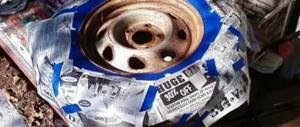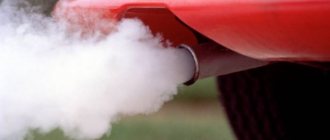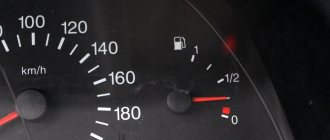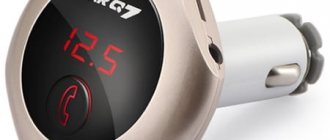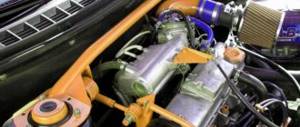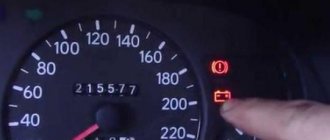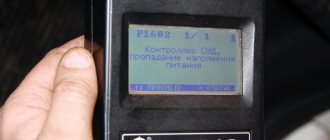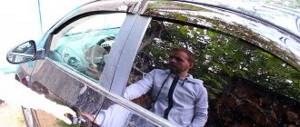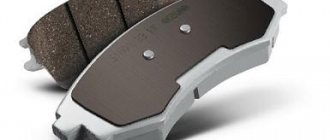Home » Engines » We repair the turbine on our own 336
A guide for self-repairing a turbine.
The power and speed that a car with a turbocharged engine provides are fundamental issues for many drivers. They are achieved due to the built-in turbocharger, which supplies large volumes of air to the engine cylinders, thereby increasing its power. However, the happiness of owning such a super useful unit is overshadowed by its frequent breakdowns. All car parts wear out over time, but repairing a turbine occurs much less frequently than completely replacing a damaged mechanism.
Compliance with basic operating rules, a thorough technical inspection on time, the use of high-quality synthetic oil and its regular replacement, the correct position of the oil line without kinks, the presence of a turbo timer and the purchase of a blow-off bypass valve - these simple manipulations can increase the durability of the turbocharger several times. Not everyone can afford the opportunity to visit a service station if there is the slightest malfunction, so it makes sense to master the basics of minimal turbine repairs on your own.
The turbine design is quite simple; its main elements are:
- Common body of the assembly and volute.
- Sliding bearing.
- Thrust bearing.
- Spacer and thrust bushings.
So the main elements of the turbine are metal (aluminum casing, steel shaft), they cannot be repaired - only replaced.
The main causes of turbine malfunction are quite amenable to self-diagnosis and repair. Of course, if you lack the necessary skills, it is better to delegate these procedures to professionals.
Almost all breakdowns are based on 2 violations: technical inspection performed poorly or not on time.
Self-diagnosis of the turbine
Carry out a self-diagnosis of the faulty turbine, based on the following factors: a decrease in power and pressure of the turbocharger, after which all possible initial causes of failure of this unit are excluded. We do the following: open the throttle valve completely, this way you will check the turbo boost pressure. To do this, you need to fully press the gas pedal so that the engine reaches maximum speed. This is the only way you can check whether the turbo boost pressure is reaching maximum. If no current is observed, this does not mean that this unit has become unusable. Failure to obtain the maximum permissible turbo boost occurs due to excess back pressure. The reason is often a clogged catalyst. In this case, you just need to check the catalyst. If the catalyst feels normal and the operating condition is stable, continue the diagnostics further, moving on to diagnosing the wastegate, known as WestGate. If you are a fan of aggressive and sporty driving, then the wastegate does not close completely, which leads to a small part of the gases escaping past the valve. This means that the turbine does not have the required amount, which does not allow it to take advantage of its full operating potential. So diagnostics of the damper is also necessary.
Repair features
Once dismantling is completed, repairs can be made. To do this, you should have a special repair kit on hand, which contains everything you need - liners, hardware, seals and rings.
Check the quality of fixation of the nominal liners. If they are loose, then they need to be sharpened and the shaft balanced.
We recommend: Why does the car stall at idle and what to do?
In this case, it is advisable to clean the liners well and lubricate them with engine oil.
The retaining rings located inside the turbine must be installed in the cartridge. At the same time, make sure that they are in their place (in special grooves).
After this, you can mount the turbine liner, having previously lubricated it with engine oil. The liner is secured with a locking ring.
The next step is to install the compressor liner, after which the well-lubricated sleeve can be inserted.
Next, put the ring plate on it and tighten it thoroughly with the bolts (without fanaticism).
Install the skid plate (secured with a retaining ring) and oil scraper ring.
All that remains is to return the snails to their place. That's all.
This article indicates a general algorithm for disassembling and assembling a turbine. Of course, depending on the type of the latter, this algorithm will be partially changed, but the general progress of work will be identical.
Well, if a serious breakdown is detected, then it is better to immediately replace the old turbine with a new one.
DIY turbine repair
With your own hands at the turbocharger, you can diagnose the internal WestGate, while controlling the thrust to make sure that the valve is closed or not closed, its resistance or jamming during operation. If you are unsure of your diagnostic results, then you should contact a specialist. Remove the external WestGate when the mode is not working. Turn the assembly over and check that the WestGate valve has completely closed the gate. Perform a full pressure test on the WestGate with compressed air after seeing how it works. But the need for such work is that the WestGate may not withstand the hundred psi pressure that a brand new air compressor can easily produce. To do this, you need to reduce the pressure to 50 psi. This pressure is quite enough to diagnose the performance of WestGate without damaging the diaphragm. The cause of turbine failure can also be a vacuum leak. This is the reason why when the turbine produces the nominal amount of required pressure, it passes it through the intake tract. By determining the amount of boost pressure from the sensor, you can determine whether you have a vacuum. When the engine is idling, a maximum amount of vacuum of 0.75 bar is generated. If it is less than the minimum pressure which is 0.54 bar, then you have a leak. The leak can appear in two places, the connection behind the manifold and behind the throttle valve. If the check does not show negative phenomena, then the turbine supercharger itself should be checked, paying special attention to the shaft bearings. Rotating at a speed of about one hundred and twenty thousand revolutions per minute. If there is an imbalance or play, the consequences can be severe. Such units are balanced to within a fraction of a millimeter. When you try to straighten the blades of a bent impeller yourself, you weaken the metal, which can later break off and jam the unit. You can repair the turbo compressor yourself, but there’s only one BUT! You can’t unscrew it without a special wrench to unscrew the nut on the impeller, you have to have the skill!! Otherwise, the shaft or impeller will easily bend; denting will not be difficult; you can also knock off the threads. Repair kit is difficult to find. Also equipment for repairs, a stand for checking and balancing. Or buying a new cartridge costs 13-15 rubles. If the impeller has worn off against the volute, then you cannot do without replacing it with another impeller and balancing the shaft, immediately assembling it (cartridge). And the required balancing is impossible to carry out in a garage. To begin with, you need to put marks in those places where the cast iron is pressed against each other, as well as the middle and the joints of the volute and the middle, this operation is so that after assembly and installation you do not have to redo the turbine or cast iron on the machine. We put a mark on the side of the shaft where the thread is located and the same procedure on the nut and on the impeller, after which you can unscrew the shaft. These marks are made in order not to disturb the position of the impeller relative to the shaft, this is very important, and the mark on the nut is needed so as not to overtighten the nut and thereby jam the shaft.
Let's sum it up
Often, drivers of cars with a turbine installed are faced with the problem of turbine failure. This can happen for several reasons, the main one being oil. It may not be of the same quality or composition, or it may not be enough at all.
The problem is that drivers simply do not know how to take care of it. One way or another, you need to repair turbines with your own hands or at a service station, because it significantly adds power to the engine, and if the turbine is installed by the manufacturer, then the engine really needs this device.
We disassemble the turbo unit with our own hands
The turbine snail can get stuck. In order to remove it, use a bolt to secure the snail; this will help to gently move it away. The snail is located on a cone and this requires little effort. Unscrew it carefully, gradually, crosswise, just as you tighten the wheel. You also need to pay attention not to deform the turbine wheel. This method may seem difficult due to the unique design of the turbine. Sometimes you can use a wooden mallet. Check the shaft for play when you finally manage to disassemble the volute. The play should not be longitudinal. And the transverse play may be noticeable, but the play should not exceed a millimeter. But even if you have no play, this does not mean that the turbine will not consume oil. Next, you need to remove the compressor wheel using pliers whose jaws move apart. The opposite end of the shaft must be clamped with a shaped mandrel. The compressor shaft has a left-hand thread.
To remove the compressor wheel, use a regular universal removable wrench. Mark the position of the wheel and nut in relation to each other. To maintain balance. O-rings hold retaining rings. The shaft bushings are removed by unscrewing three T15 bolts. As you understand, the bushings become the cause of the play. An insert that holds one retaining ring on the compressor side, and two rings on the turbine side. We clean the cartridge and wheel very carefully. Remove the sealing ring from the shaft. We use a repair kit for TKR. The standard kit includes a full set of rings, washers, seals, liners and hardware. If you have play on the nominal liner, then grooving and balancing the shaft will save you from this. Also, the set of belts includes inserts of different sizes. The inserts need to be cleaned and lubricated with oil. Install the internal retaining ring into the cartridge. We make sure that we get into the grooves completely. We install the turbine liner. Initially, lubricate it with oil. Secure with a locking ring. Then we insert the compressor liner. Lubricate the bushings, put oil on the removable ring on the bushing, install the plate, and tighten the T15 bolts. We tighten it enough, but not to the point where the thread breaks. We install the dirt protection plate and secure it with locking rings. Then install the oil scraper ring. This process is very long. since putting on a ring is not so easy. Lubricate and insert the shaft. We tighten the nut to a torque of 2.5 Nm - 5 Nm. We put the stripped snails in place. Next we install WestGate.
Congratulations, you have an almost new turbine, made with your own hands, at the lowest price.
Turbocharger repair
To eliminate an actuator defect, complete disassembly of the engine turbocharger is usually not required. If the malfunction is more complex - jamming of the actuator valve, then its elimination will require complete disassembly of the unit. To repair the turbocharger yourself, do the following:
- Wash the housing and inspect the assembly to determine the malfunction.
- Use marks to mark the position of the turbine scroll relative to the compressor scroll.
- Remove both volutes from the bearing housing.
- Disassemble the “cartridge”. To do this, unscrew the fastenings of the impellers and remove them. Please note that the threads for fixing at the ends of the shaft are always left-handed. The fit of the impeller hubs on the shaft is conical. Therefore, for removal it is often necessary to use a universal puller.
- Correct a slight violation of the geometry of the blades by bending them. After this, as well as after replacing the impellers, the shaft with impellers must be balanced.
- If the geometry of the shaft bearing journals is violated, grind them on a cylindrical grinding machine if the wear does not exceed the maximum permissible values. If the maximum permissible wear is exceeded, replace the shaft.
- Change the shells in the bearing housing. Make sure that the oil supply holes in the housing and liners line up.
- Treat the inner surface of the liners with a reamer. Its size should be 0.04 mm larger than the diameter of the shaft support journals.
- Blow and wash the bearing housing cavity.
- Lubricate the bearing journals with oil and assemble the cartridge.
- Attach the snails.
- If, when installing a turbocharger, you find that the old gaskets have become unusable, you can make them yourself. To seal the connection through which exhaust gases pass, metal asbestos must be used. For the rest, paronite or pressed gaskets are suitable. When installing, the latter should be lightly lubricated with ordinary silicone sealant.
Repairing a turbine cartridge requires access to equipment and tools not found in a typical garage. If you don't have one, you will have to pay for the services of specialists who will perform the necessary operations. Therefore, it is most profitable to repair the engine turbocharger yourself. If you want a guaranteed good result, it is best to replace the cartridge with a new one.
turbine after
Buying or renovating?
Of course, it’s easier to buy a new turbine, but repairs are cheaper. Why overpay for a new one if the old one can be repaired, and you still get a guarantee for the work done.
The turbine contains parts that are practically not subject to wear, and it is their cost that comes back to you in the form of savings. But not every turbine can be restored, and here we will help you deliver and deliver it.
Advantages and disadvantages:
The new turbine itself has no disadvantages if it is original. Chinese copies are another matter, but this is not our case! All new turbines that we offer to our customers are only from well-known brands: Garrett, Mitsubishi, IHI, Holset, KKK, Schwitzer, Borg Warner, Toyota.
The disadvantage of replacing a turbine with a new one can only be that it will be replaced without finding out the cause of the breakdown. And this threatens a repeat malfunction, but if the car owner provides us with his faulty turbocharger for diagnostics, he will avoid this fate.
On average, savings on repairs are 40–50% of the cost of a new part. This is the main advantage of all repair operations carried out by certain organizations.
There are two disadvantages of turbine repair: the repair time and the psychological barrier.
Many organizations are engaged in turbine repair, and each builds the process in its own way. The use of homemade parts, the lack of special equipment and the necessary knowledge - all this leads to customer dissatisfaction. If a car on which a turbine was previously repaired loses power, many people first of all blame poor-quality repairs.
In principle, the only real downside is the repair time. No one will argue that taking a new turbine off the shelf is faster than repairing it. But the absence of intermediaries and the availability of spare parts allows us to carry out urgent repairs within a few hours, and the constantly replenished working capital allows us to simply exchange a faulty turbine for a ready-made one.
A little about us:
The Turbine Systems and Technologies company provides a full range of services related to turbines: diagnostics of turbines, determination of the cause of failure, replacement of turbines and related work, repair of turbines and sale of new ones. New turbines only from well-known world brands. Our main advantage is efficiency and quality of work.
What guarantees?
The warranty on new and refurbished turbines is 12 months without mileage limitation. Each of our clients, along with the turbine, receives detailed installation instructions and a warranty card, which lists all the conditions for maintaining the warranty, as well as recommendations for the maintenance and operation of a car with a turbine. If we carried out diagnostics of an old turbocharger, then the warranty card indicates the reason for its failure and recommendations for eliminating it.
You can get a discount here.
Nizhny Novgorod, st. Chongarskaya, 28A
https://turbolab.ru/
Tel:
Turbine repair
